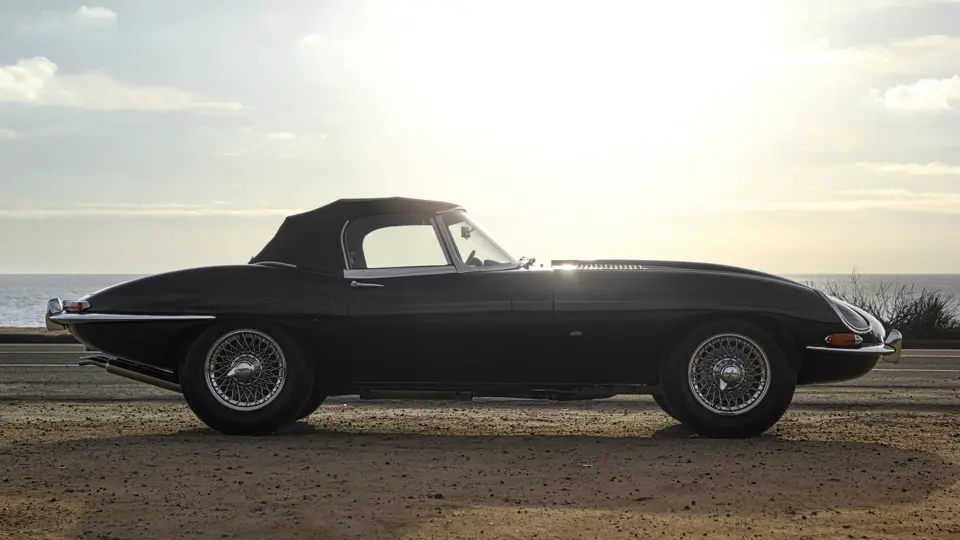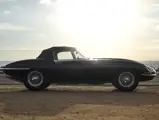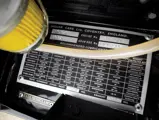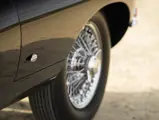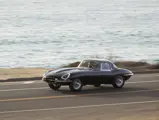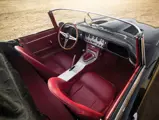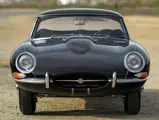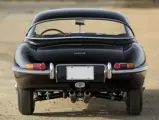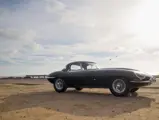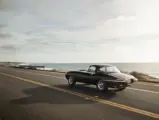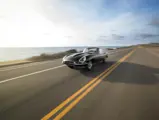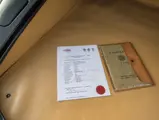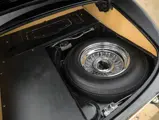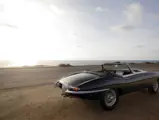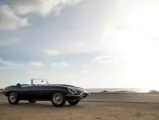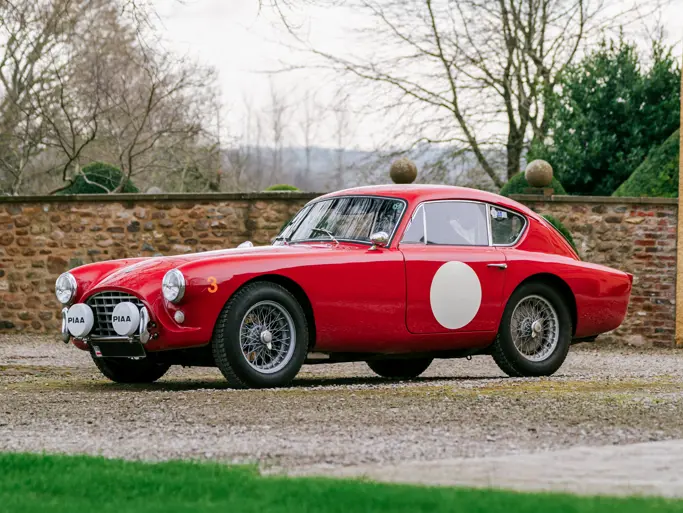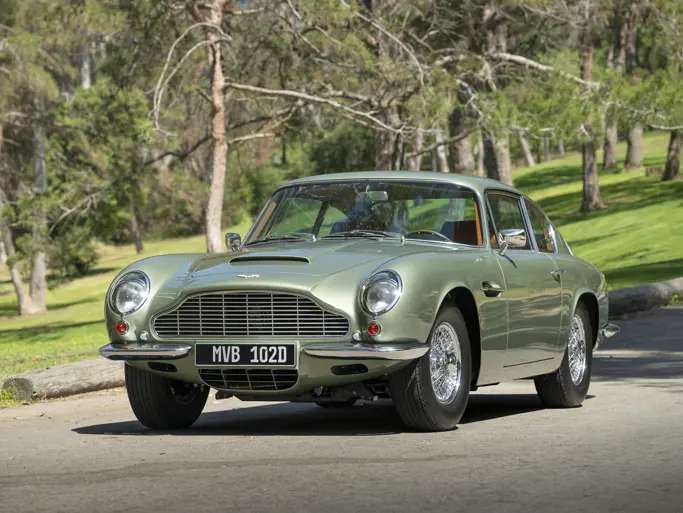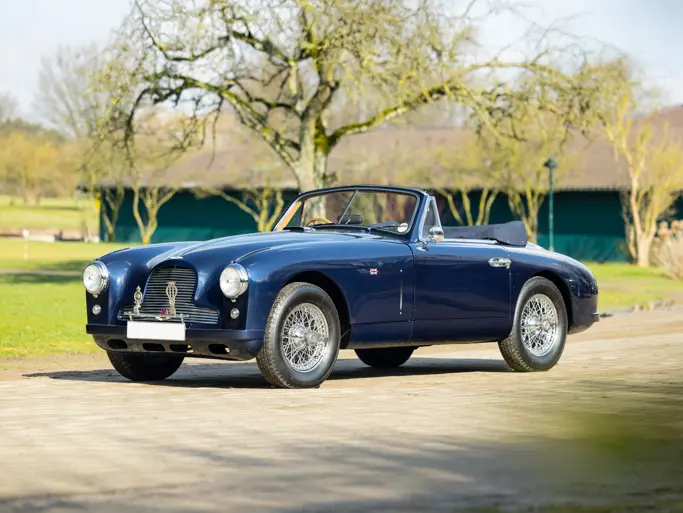
1961 Jaguar E-Type Series 1 3.8-Litre Roadster
{{lr.item.text}}
$440,000 USD | Sold
{{bidding.lot.reserveStatusFormatted}}
- An early example with outside bonnet latches, flat floors, and welded bonnet louvers
- Stunning black over a red leather interior; fitted with correct hard- and soft-tops
- Matching-numbers car, as confirmed by its JDHT Certificate
- Complete restoration by marque specialists
- Low mileage since completion
265 hp, 3,781 cc DOHC six-cylinder engine with three SU carburetors, four-speed manual gearbox, independent front suspension with double wishbones, torsion bars, and a sway bar, independent rear suspension with coil springs, double wishbones, and a sway bar, and four-wheel hydraulic disc brakes. Wheelbase: 96 in.
Up until the mid-1950s, Jaguar was a well-respected builder of sporting cars, most notably the highly successful XK series and the pre-war SS Jaguars. But, everything changed in 1951.
That was the year of the first of Jaguar’s victories at Le Mans, where the winning C-Type was soon followed by the even more competitive D-Type, which began to win in 1955. Over the space of about five years, the automaker transformed from a small British boutique to one of the most fearsome builders of serious race cars on the planet.
Their problem was that their passenger cars were a poor reflection of their on-track prowess. How did one reconcile the stunningly aerodynamic C- and D-Types with the old-world charm and styling of an XK150? Jaguar aerodynamicist Malcolm Sayer’s answer was to bring their racing and passenger car efforts together, and the result changed the sports car world forever.
The drivetrain of the 1961 E-Type picked up where the XK150 left off, offering the triple-carbureted, 265-horsepower, 3.8-liter straight-six from the S-specification XK150 and the same four-speed Moss transmission. All new, however, was a fully independent suspension that proved so successful that Jaguar would use variants on the same architecture underneath every car they made through to the late 1980s. Perhaps most important, from a performance standpoint, was its unitized body construction, which helped to drop curb weight by more than 300 pounds. As a result, with the same engine and transmission as the XK150 S, 0–60 times dropped by a full second to 6.3, the car could lope along at 145 mph with two people and luggage, and the all-independent suspension “enhanced [your] driving,” as Car & Driver put it.
And clothing it all, of course, was the immortal new body, in roadster and coupe form. Despite influence from the C- and D-Types, the E-Type was not designed in a wind tunnel. Instead, Sayer sculpted it with a combination of instinct and mathematical formulae, both of which proved to be absolutely correct. Not only was the car a popular hit from the moment it appeared, but later aerodynamic studies and race track wins confirmed that it was right in every regard.
So popular was the E-Type that the small Jaguar factory was behind on orders for the next four years, meaning there was no compelling reason at all to make major changes to the car until 1964. Rather than large-scale differences, early E-Type enthusiasts look for the small clues that differentiate their cars, such as this example’s chromed escutcheon external bonnet latches, which are found only on early examples.
The car on offer can be considered perhaps the most desirable model, in that it is a very early production car with a number of features that were soon changed. The first cars were delivered in March 1961, all for export. as domestic production did not start until July. As one of the first three hundred E-Types built, this car features flat floors and exterior bonnet latches. By chassis 301, the floors were dished to allow for more foot room, while the outside bonnet latches continued for a further 200 cars, to chassis number 500, when they were moved inside.
This car, chassis number 875157, was originally purchased by F.P. Thorson from Jaguar Cars in New York City on September 22, 1961. It appears to have spent a good proportion of its life in California, in the hands of two collectors, before it was restored by marque specialists in California. They proceeded to bring the car up to show condition, in every respect, as it appears today. The painstaking restoration of this early E-Type extends to every aspect. The work has been documented and photographed, and NOS parts were used wherever possible. The vehicle was disassembled, the interior was removed, and all items were documented. The bodywork was examined and carefully reworked before being sealed, primed, painted, clear-coated, color-sanded, and buffed to its gleaming black finish.
All of its systems were inspected and restored or replaced, where necessary. The transmission and clutch were rebuilt, along with the hydraulic system, and all grommets, seals, and hardware were replaced. The brightwork was replated, and a new interior was fitted with red leather in the correct material. Both a restored black hardtop and properly fitted soft-top are included, completing the Jaguar’s stunning look. Finally, it rests on beautiful polished chrome wire wheels with Dunlop Roadspeed tires.
Included with the sale of this handsome Roadster is a JDHT Certificate, an owner’s manual, and a radio blanking plate. Due to this car’s significance as an early matching-numbers Series 1 E-Type, no expense was spared when returning it to a condition that was as good as when F.P. Thorsen first fell in love with it in the Jaguar Cars’ New York showroom almost 54 years ago.
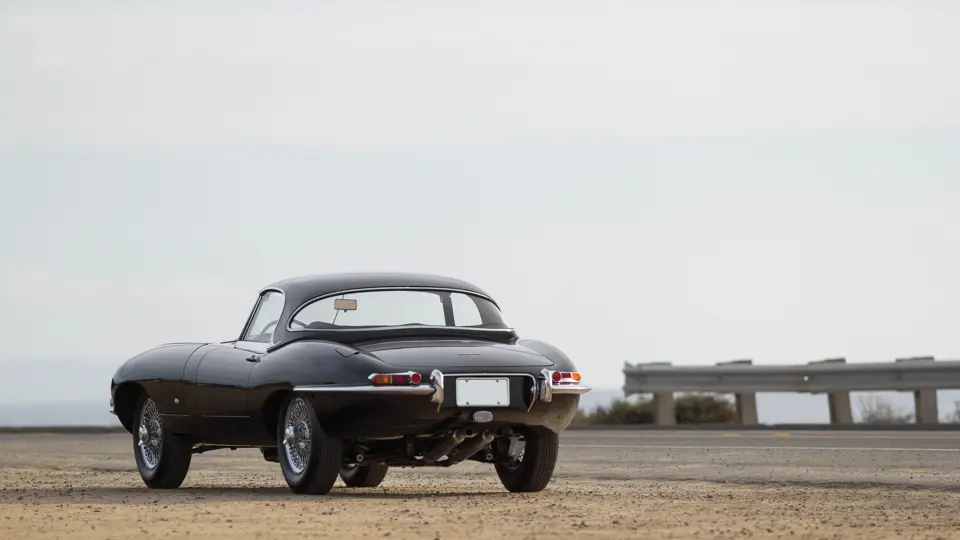
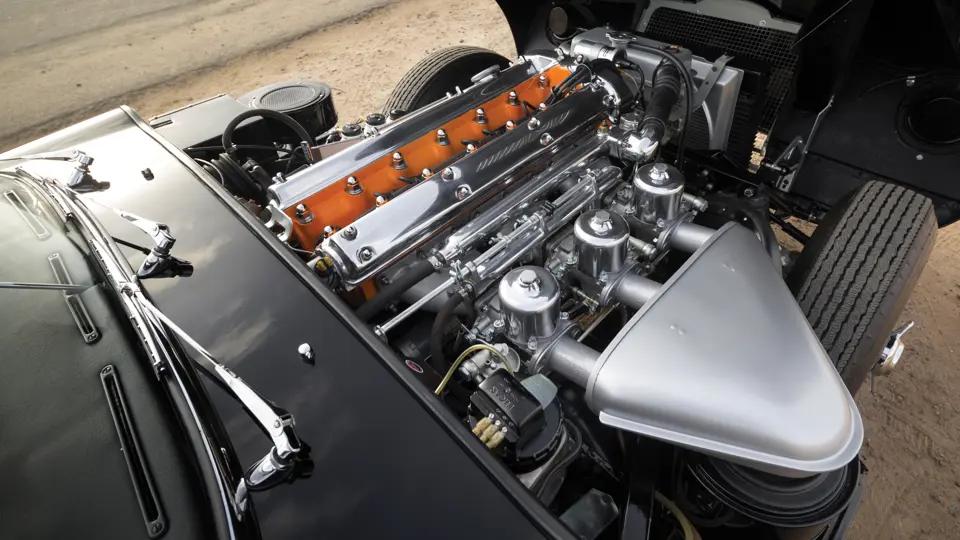
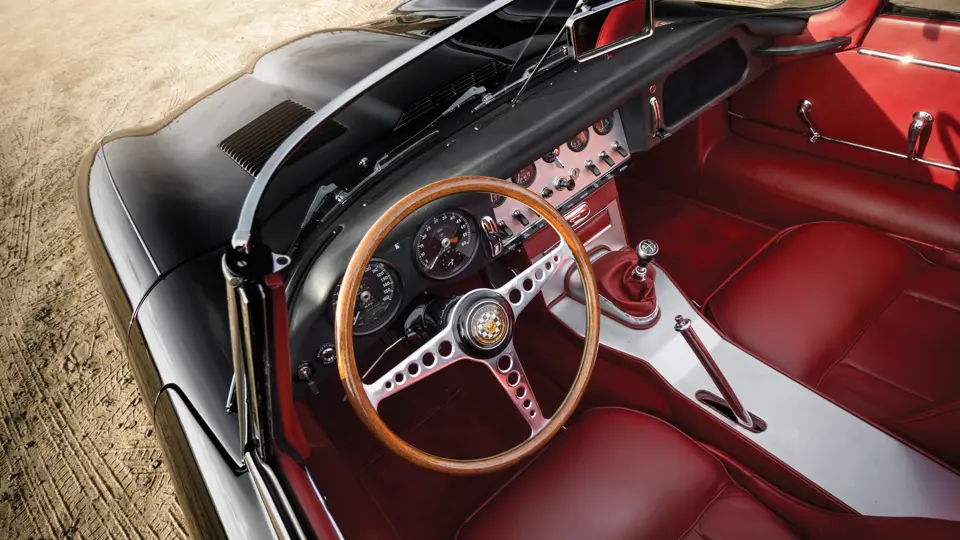

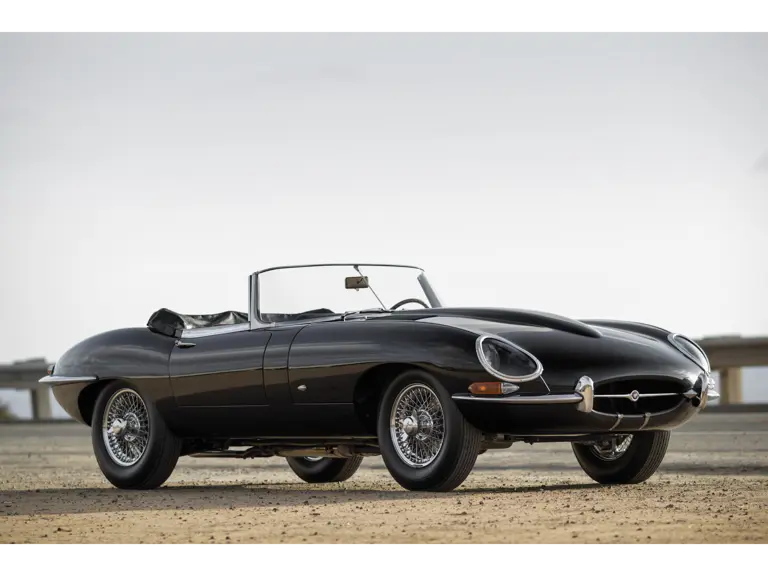
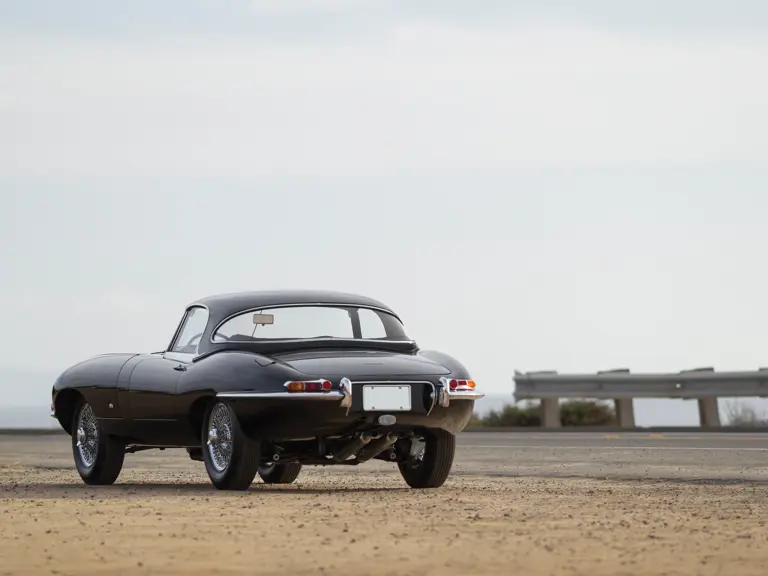
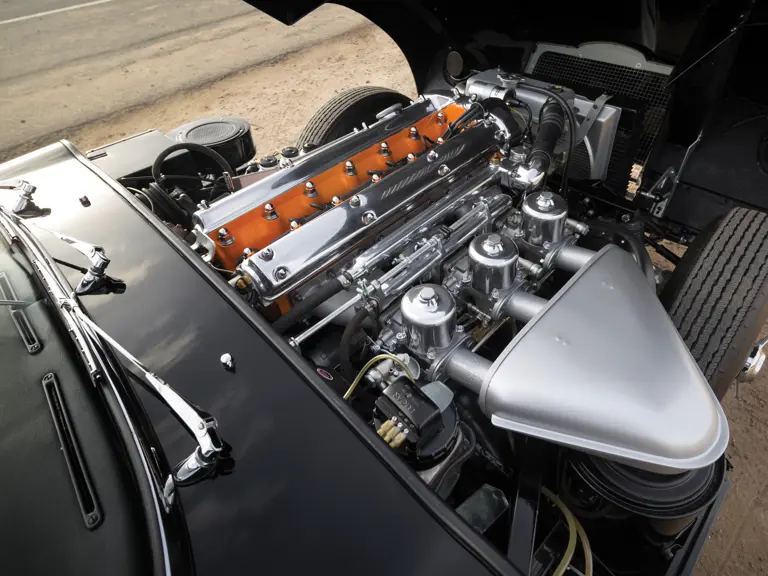
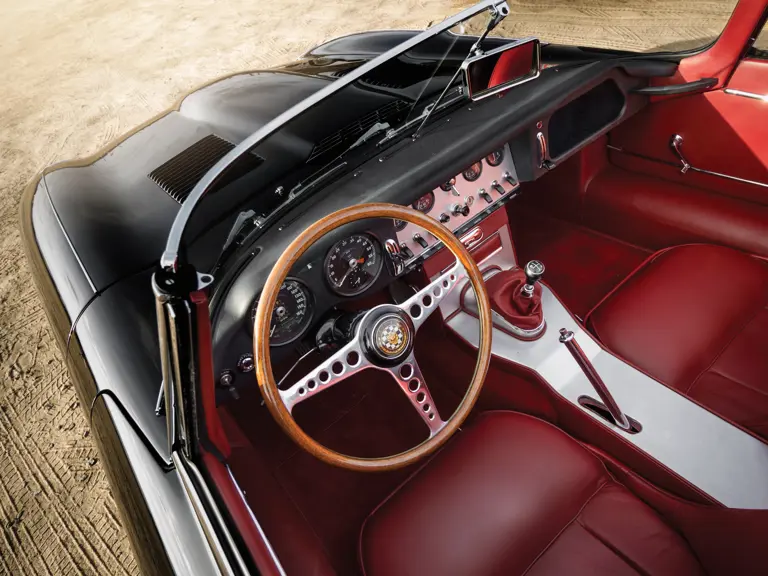
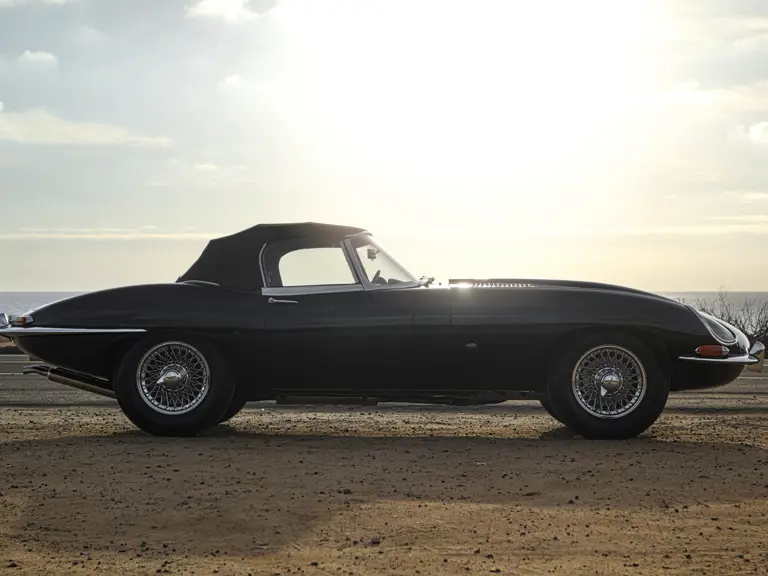
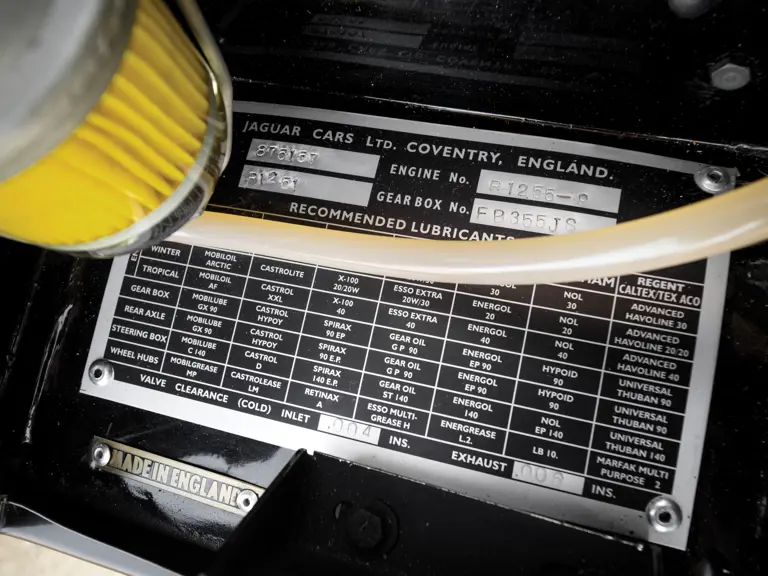
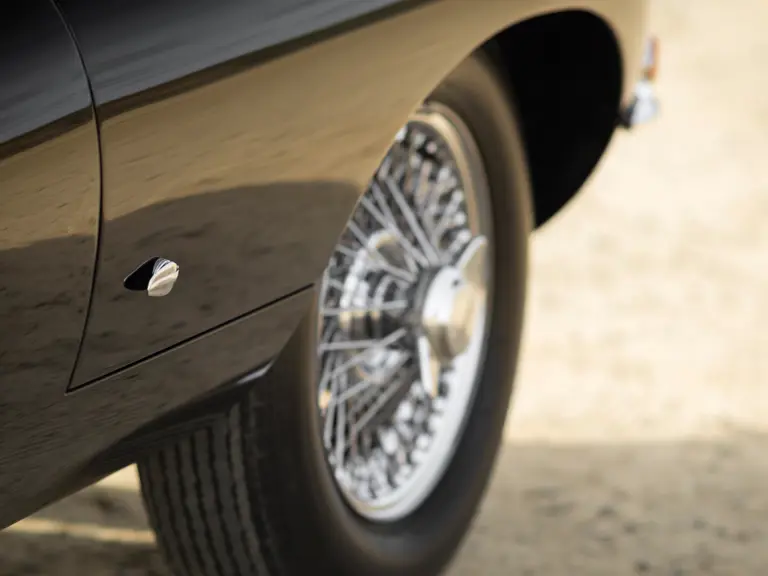
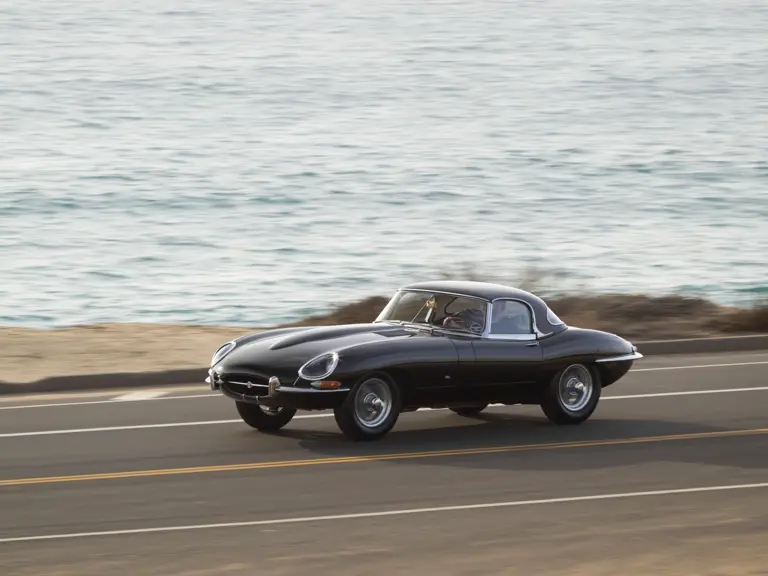
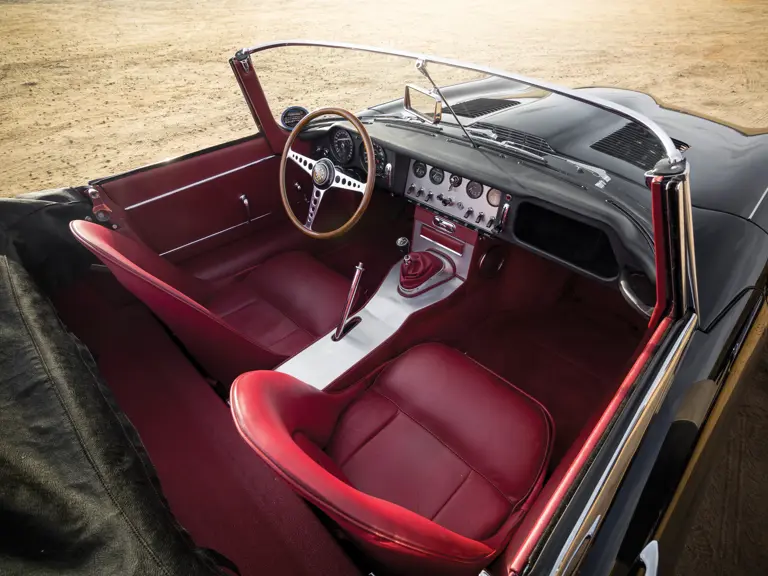

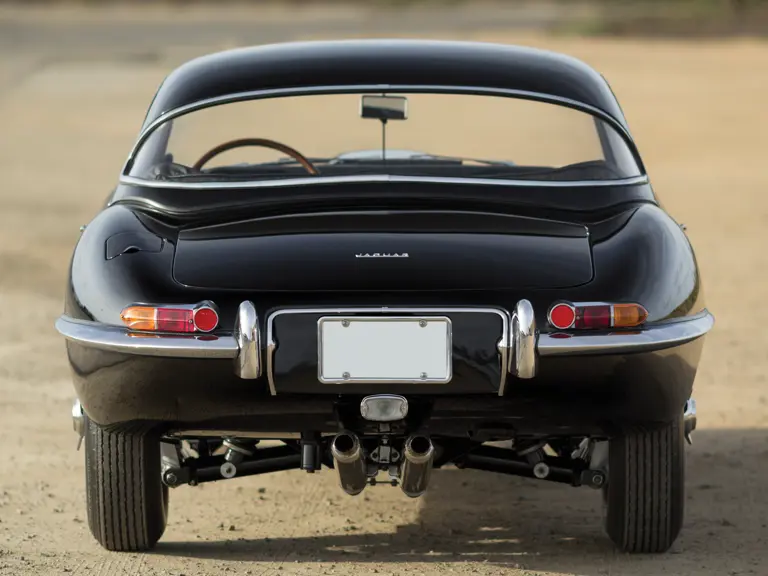
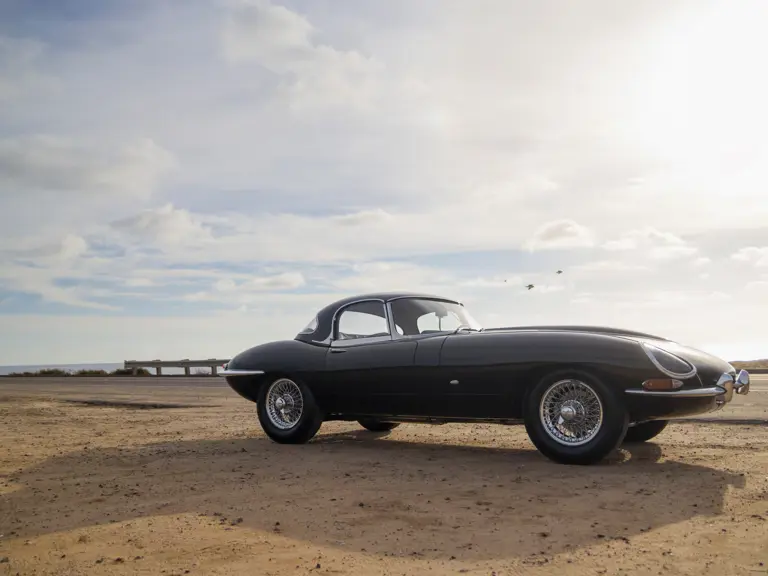
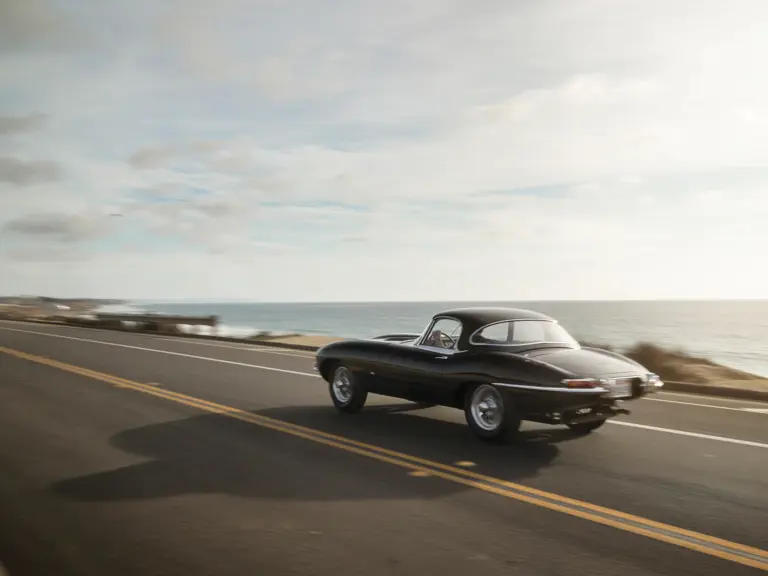
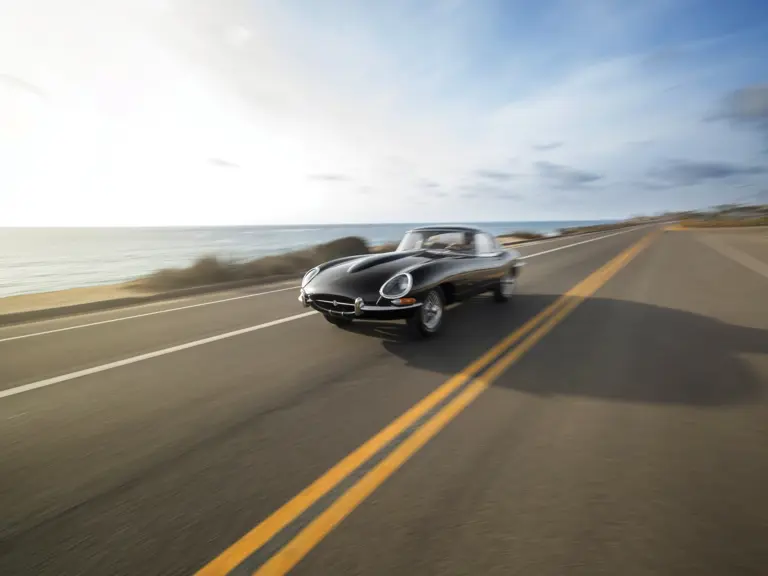
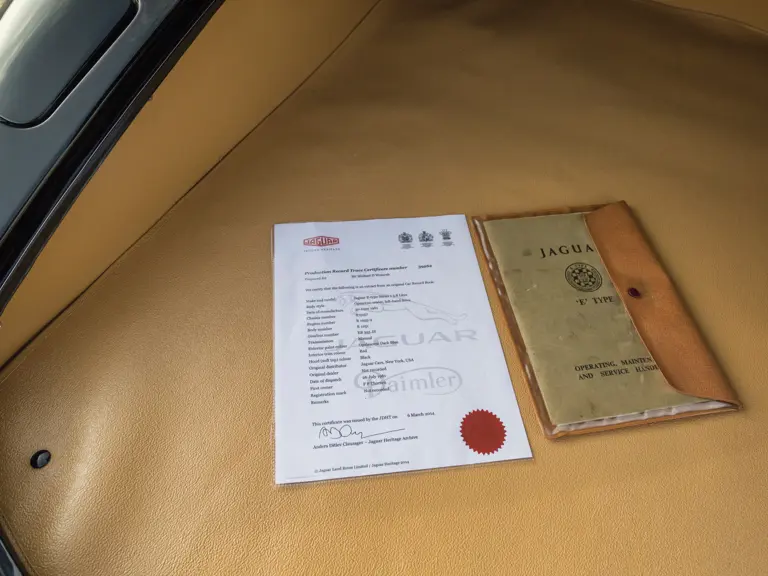
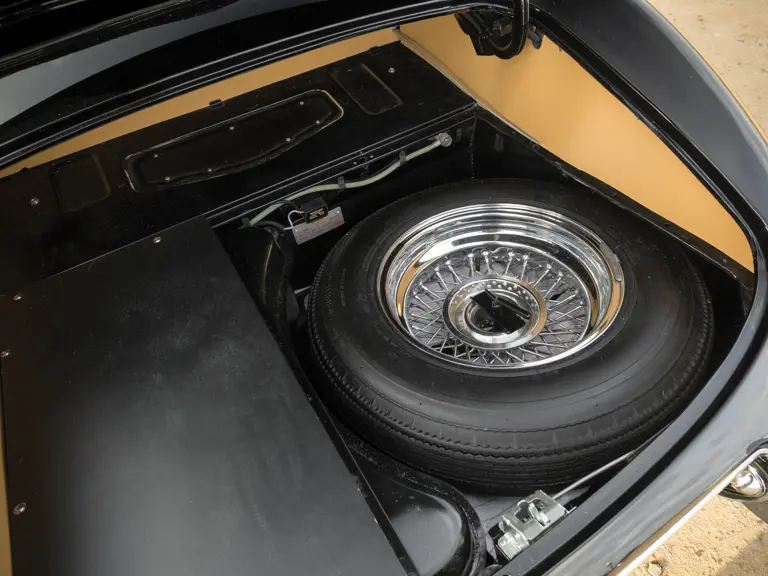
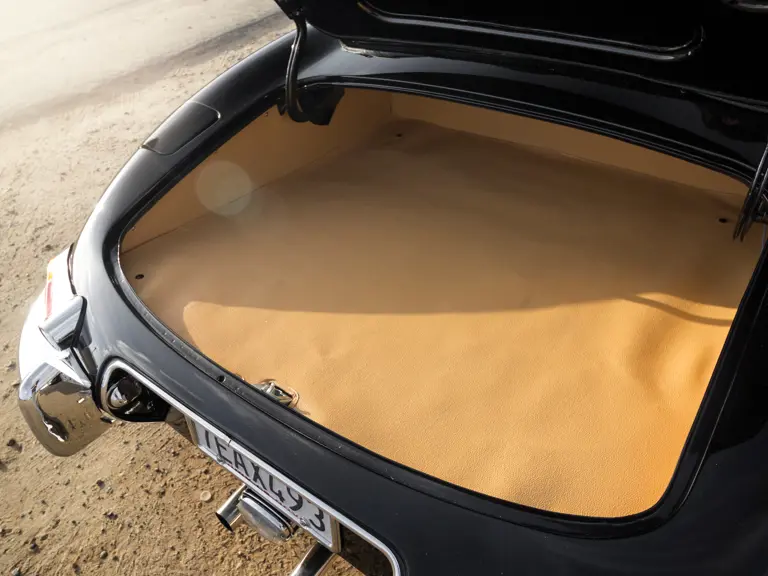
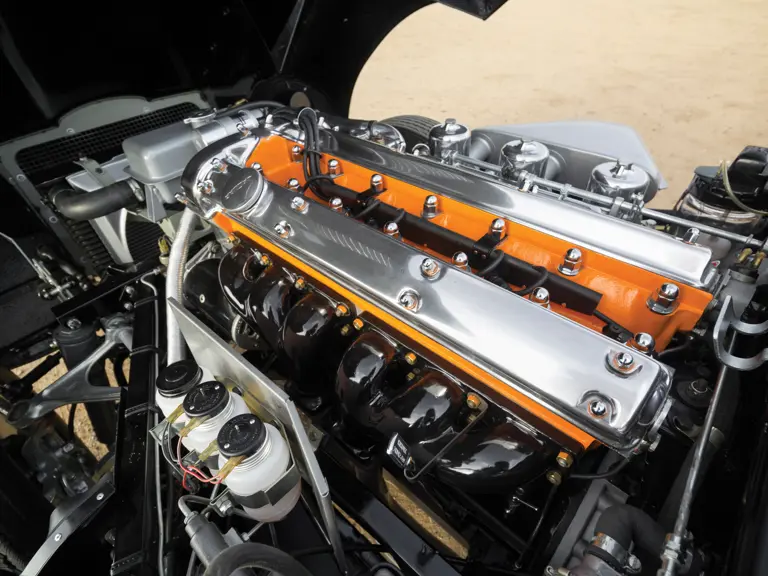
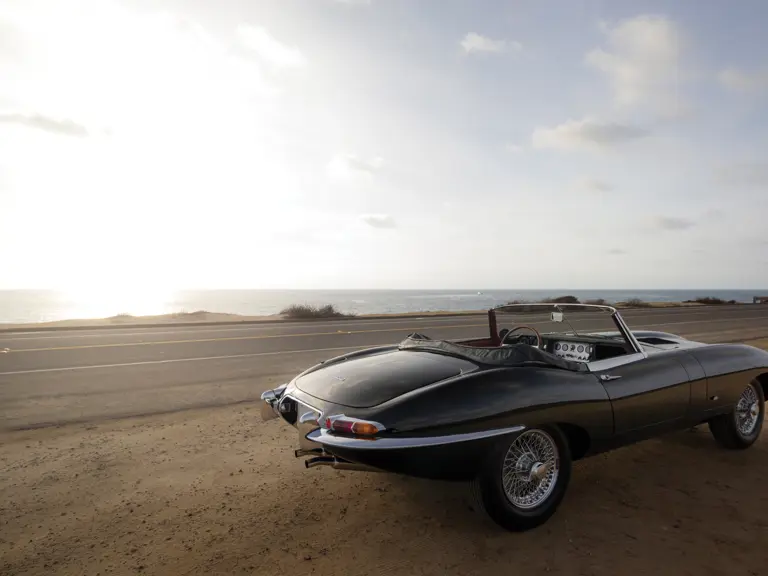
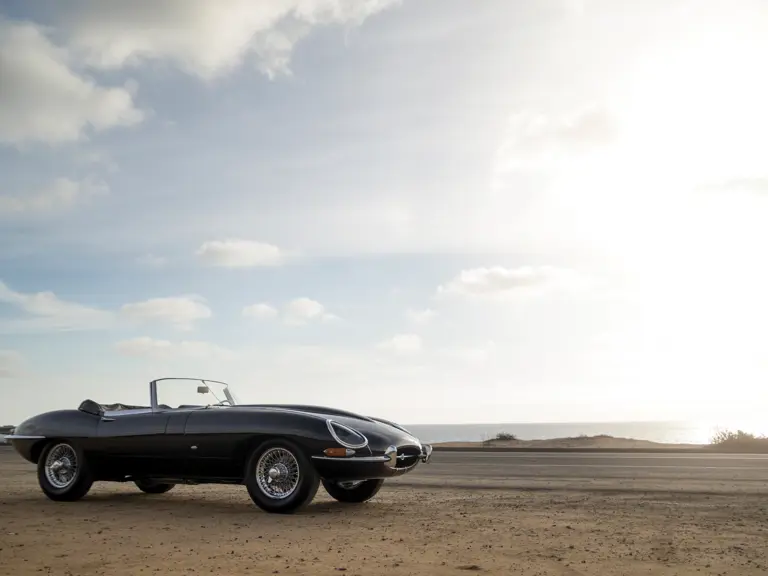
 | Phoenix, Arizona
| Phoenix, Arizona
